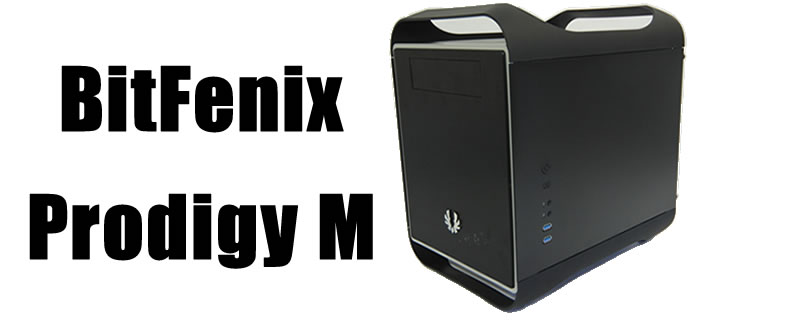BitFenix Prodigy M Review
Conclusion
This isn’t going to be one of our massively long conclusions. The exterior of the Prodigy has had plenty of exposure since the release of the original Mini-ITX version all those moons ago, and it’s fair to say we love it here at OC3D. It’s a great looking case that has gone from strength to strength with BitFenix releasing additional colours to refresh the line as well as solid front panels and windowed side panels to add that little bit more variety.Â
The release of the Prodigy M has seen BitFenix alter the internals of the chassis in order to accommodate the Micro-ATX motherboard. Perhaps this was in response to the large numbers in the modding community who were converting the original to M-ATX, or perhaps it had always been a part of the grand plan for the chassis, whatever the impetus, here it is. The new internals are identical to those of the recently reviewed Phenom M, and as with the Phenom M the internals of the Prodigy M bring both advantages and disadvantages over the original Mini-ITX format. The main drawback of having more space given over to the Motherboard is the loss of the prodigious radiator capacity that the Mini-ITX version has. Now that’s not to say you’re not going to be able to get wet with the M because you are, it’s still able to house a 35mm thick rad in the roof which means pretty much all of the current crop of 240mm based AIOs such as the H100i and Seidon 240 will fit just fine. There is a trade-off here though which is that although the larger motherboard brings with it additional PCI slots to which the M caters with its 5 expansion bays, you are going to have to surrender some of these if you want a rad in the roof, which basically means you’re down to a single GPU. If you absolutely have to go multi GPU and still want to get wet then all is not lost as the rear of the M is able to accept a 140 or 120 fan, which in turn means that such units as the Kraken X40 and the H90 and H80i are viable options. If the thought of adding water to the inside of your PC case still fills you with dread you’ll be delighted to know that the Prodigy M can accept CPU coolers up to 160mm and even 195mm if you’re happy to loose a few HDDs. The Prodigy is also able to accept long GPUs, anything up to 320mm in fact but you are going to have to think about how you route the wiring out of the top of the PSU to avoid conflicts.Â
So what are the advantages of the M-ATX format of the Prodigy case? Well it pretty much boils down to the price and additional features often offered by the M-ATX format. Pound for pound M-ATX motherboards do tend to be cheaper than comparable Mini-ITX boards. Let’s take as an example the latest crop of Asus Maximus boards, the Mini-ITX Maximus VI Impact with its single PCI slot and only 2 RAM slots will set you back about £190, whereas the Micro-ATX Maximus VI Gene with 4 RAM slots and dual GPU capabilities will only cost you in the region of £160, representing a £30 saving, and that’s before we’re even looked at SATA ports and chipset cooling. Yes we know there are some very cheap Mini-ITX boards out there, but then again there are also some very good value M-ATX boards if overclocking’s not your thing and you want to go low power.
Whether you opt for the original Mini-ITX version or the new Micro-ATX Prodigy M the fact is that you now have a choice, and with the M version priced a £75 and so costing just a fiver more than the original Mini-ITX both cases still represent excellent value for money. Which one you go for will depend largely on what your needs are, either way you won’t be disappointed.
Â
Thanks to BitFenix for sending in the Prodigy-M for review, you can discuss your thoughts in the OC3D Forums.Â





